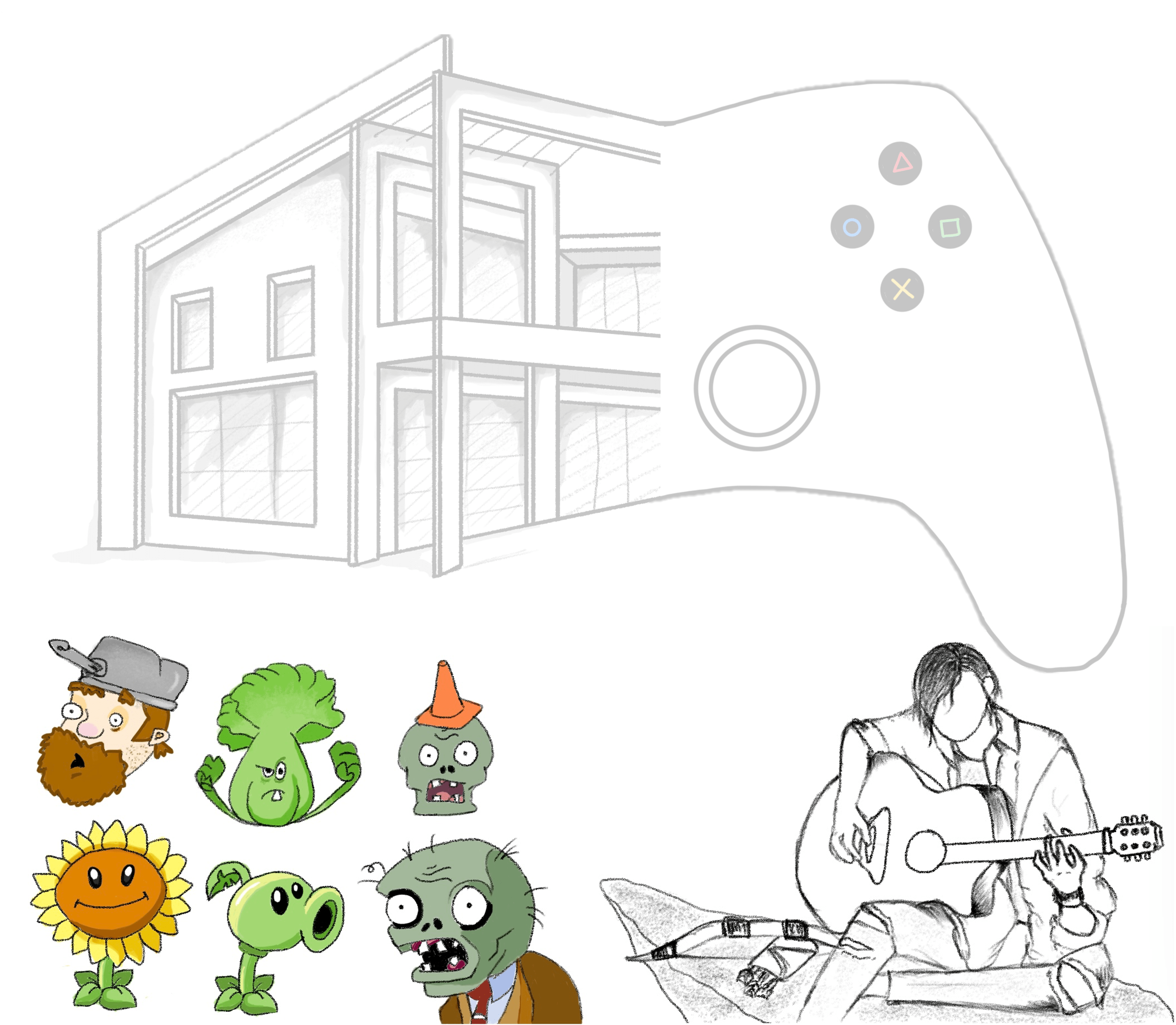I like building products, and games are such a special type of product since they aren’t appealing to people out of any pragmatic considerations; people’s love for games is a lot more primal and pure. So, being able to create games has always seemed like a uniquely rewarding experience. But it’s been a hot minute since I thought of myself as a designer: in terms of skills, I’d much sooner call myself an engineer or product person. This class sort of pushed me in the deep end and told me I had to make two games in ten weeks, and in the process of getting things done, I learned some skills and gained confidence in some others, so that building games feels a lot more accessible now.
Before this class, games felt like a bit of a programmatic black box packaged with amazing graphics to hide away all the complexity. Designing games seemed like it would require large teams with solid infrastructure and huge amounts of resources, in order to build something that vast audiences would enjoy. The best games I’d played or seen had impeccable AAA graphics. So, I thought that visual designers and artists would lead the game creation process, since the backend and mechanics could define the limits of the game, but it would ultimately be the aesthetics and visual design that would make players choose to try a game.
By breaking the design process down into well-defined components, CS247G took the mystery out of what makes a game good. The class has given me a clearer picture of the separate roles of gameplay, mechanics and visual experience, and equipped me with an evaluation process to understand experiences. Now, looking at games through the lens of the formal elements we looked at has become quite natural. Some of the most memorable concepts have been the MDA model and different types of fun, and how loops and arcs build narrative architecture. And one thing this class does beautifully is expand “games” to encompass a whole variety of types and genres and modalities, which expands the realm of products we can analyze, learn, and draw inspiration from.
I especially enjoyed the sketchnotes we made each week. It had been over half a decade since I’d felt like an artist, and I must have drawn a grand total of three things in that time, so I’m honestly very grateful for the opportunity. A rather unexpected takeaway has been rediscovering that I enjoy putting pen (Apple Pencil) to paper (the notes app on the iPad I got when this quarter started) and just making things. Here’s some things I made that I’m kind of proud of:

I’ve also had a lot of fun through the projects. For the first project, we pivoted mid-way through, which means I actually got to work on two separate games. The first was a cooperative racing game where a blindfolded player in control of the mechanics would be guided by their teammate along an obstacle course. The second and final idea was a party game combining elements of social deduction games and getting to know you games. Through these ideas, I got the chance to explore both video games and in-person games, and got to build a real-time multiplayer webapp from scratch that players can actually host lobbies and play games through (check out outlawd.herokuapp.com on mobile). For the second project, we worked on a 3D platformer with deep lore and well-crafted graphics, an idea we were all passionate about from the get go. I learned a lot from this exploration: I gained a lot of experience working with the Godot game engine, as well as with 3D modeling, texturing, and animations in Blender. I’d never done animations before, but I made a teaser video for our game with Blender animations (check it out here).
The class has been a sort of accelerator for game design and I’ve thoroughly enjoyed the rapid building and iteration it has cultivated. This has also been a positively challenging aspect of the class, since the speed with which we make progress means that pivoting can be expensive. Games are so visually-driven that the theme, the graphics design, are components that can be scary to pivot on, and for the second project, meeting our original goal of having AAA graphics turned out to be quite tough. Nonetheless, we felt proud of what our game looked and felt like, and the playtesters also had positive feedback for the aesthetics. It was interesting to see that even though the quality of the graphics itself wasn’t ultra-high AAA, the overall game experience was close to what we were aiming for. And this realization that the visuals aren’t the only thing that make a game great has helped me grow as a game designer.
I’m also thankful for all the people I’ve met through the class, which has definitely been one of the most rewarding aspects. CS247G is the first HCI class I’ve taken at Stanford, and since I’m graduating, it’ll be the only one, and I’m very glad I took it. Thanks for a really fun quarter!


